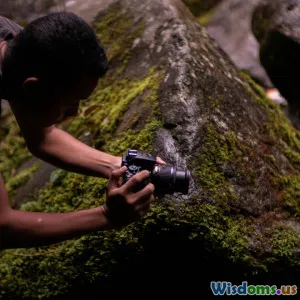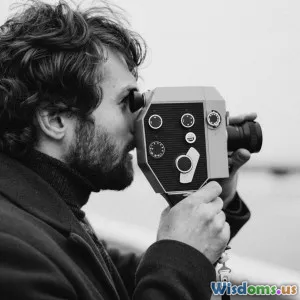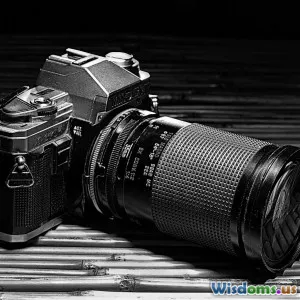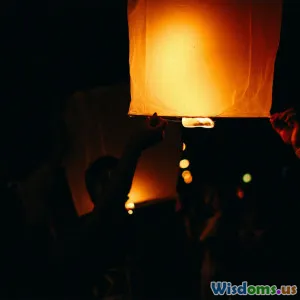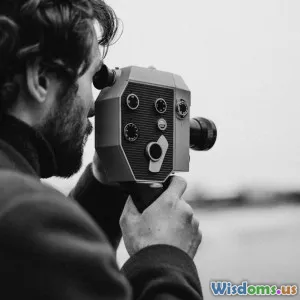
Behind the Scenes of Successful Documentaries
9 min read Explore the intricate processes and artistry behind crafting compelling documentaries. (0 Reviews)
Behind the Scenes of Successful Documentaries
Documentaries, once a niche corner of filmmaking, have burgeoned into a mainstream art form influencing cultures, shaping perceptions, and revealing truths. They have the extraordinary capacity to present complex narratives grounded in real life, yet behind that superficial simplicity lies a maze of meticulous planning, creative insights, and technical skill. In this article, we venture behind the scenes of successful documentaries, shedding light on elements that contribute to their success—including pre-production strategies, storytelling techniques, and ethical considerations, among other facets.
The Genesis of a Documentary: Pre-Production Planning
Much like scripted feature films, the creation of a documentary begins in the pre-production phase. This stage is often overlooked yet is the bedrock upon which a compelling narrative is constructed. Advisors suggest it involves everything from ideation to research, budgeting, and scripting.
Research and Ideation
For budding filmmakers, the importance of thorough research cannot be overstated. This involves understanding the subject matter deeply, which can include interviews, existing literature, archival research, and audiovisual pre-views. An excellent example is Jiro Dreams of Sushi (2011). The team dedicated months to researching both the culinary arts and Jiro's philosophy, resulting in an intimately sophisticated portrayal of the sushi master.
Optimally, the process culminates in a pitch—a critical tool to secure funding and collaboration—articulating both the story's core and intended impact. Projects like Searching for Sugar Man (2012), which got produced with a modest budget and ultimately garnered two Academy Awards, capitalized on such pitching moments by effectively showcasing their robust research.
Budgeting and Scheduling
Budgeting can dictate not only what stories can be told but also how. Airing on the side of penniless often means creativity is needed to achieve compelling visual storytelling. Yet, successful documentaries often operate on flexible serial schedules; filming even a moment at the right time can be instrumental for effectiveness. The hybrid economy model, as seen in The act of killing (2012), allowed for expenses prudently while succeeding retrospectively in conveying its critical narrative over an extensive shooting period.
Crafting the Narrative: Storytelling Techniques
Documentary filmmakers must absorb the omnipresence of their chosen subject matter, crafting a narrative capable of capturing and sustaining viewer interest. The most captivating documentaries possess emotional resonance combined with a thoroughly thought-out structure.
Character-Driven Narratives
One of the richest ways to elicit emotional engagement is through character-driven narratives. Audiences crave stories, and telling a documentary from a personal viewpoint can make an interesting subject relatable. Take Won’t You Be My Neighbor? (2018), which intimately details Fred Rogers’ empathy and compassion—his character forms the emotional anchor of the documentary, turning the film from a mere biographical retelling into a profound analysis of societal kindness.
Thematic Structures
Moreover, thematic narrative structures may apply to witness sentiments or highlight a specific event’s various repercussions. 13th (2016) employs historical timelines to connect the root of systemic racism in America with contemporary issues, resulting in illuminating revelations. By establishing essential themes up front, documentaries engage audiences without overwhelming them with details.
Use of Visuals and Sound
Besides structure, visuals convey a documentary's heart and can communicate its soul. Cinematography needs greater attention, as impactful imagery can mystify or emphasize emotions implied through narrative decisions and pacing. Planet Earth has skillfully showcased this concept; using awe-inspiring visuals of previously unseen natural beauty deepens audience connection while they relay vital thematic undertones of conservation and climate urgency.
Ethical Considerations in Documentary Filmmaking
Every documentary filmmaker grapples with the ramifications of their craft when portraying subjects often vulnerable or marginalized. Ethical filmmaking enshrines responsibility and accountability: How to portray truths without inflicting harm? How to balance entertainment with integrity? Making a Murderer (2015) thrusts these ethical lines into the spotlight, raising debates about fairness—sparking broader discussions around ethics in the documentary genre. As students of both storytelling and real human experiences, creators must not only tessellate their vision but grapple deeply with emotional diligence while fulfilling their artistic responsibilities.
The Role of Technology
Beyond creative insights, technology holds immense importance in today’s documentary landscape. The evolution of camera technology, drone cinematography, and digital editing software all contributes to a vast narrative potential that filmmakers can exploit.
Accessibility of Equipment The democratization of filming equipment has birthed numerous successful low-budget documentaries. Filmmakers like Josh Fox with Gasland (2010) utilized inexpensive cameras to film crucial rural American stories, generating significant viewership that emphasized essential messages around environmentalism.
The Rise of Streaming Platforms
Moreover, streaming platforms now provide enormous outreach avenues to deliver documentaries. The triumph of Tiger King (2020) on Netflix showcases the serialized format—gone are the days when documentaries were confined to festivals. They attract global audiences instantaneously, allowing creatives to instructordinate dynamic discussions over notorious and conventional topics with unique narratives while removing traditional barriers tied to cinema.
Case Studies: Successful Documentaries as Teachings
To encapsulate an understanding of successful documentaries, examining a significantly varied range may offer insight to aspiring filmmakers:
- Won't You Be My Neighbor? (2018) – Utilizes character-driven narratives to showcase young Fred Rogers’ empathy, leveraging emotional connection through storytelling techniques.
- The Act of Killing (2012) – Delivers potent advocacy of historical depth, unearthing collective guilt through intense techniques.
- 14 Days in America (2011) - Utilizing an array of testimonial interviews, imparting myriad realities and complex nuance into significant movements, catalyzing impact potential through comprehensive viewpoints.
Conclusion
As we peel back the layers of successful documentaries, we recognize a wider conversation around art, ethics, and creativity. Crafting a successful documentary involves a nuanced blend of research, narrative skill, ethical responsibility, and advanced technology. Aspiring documentaries earn endless inspiration and proportional depth by deeply engaging with their subject matter while ensuring integrity—and that oftentimes turns ordinary human experiences into profound narratives able to initiate profound shifts within societal perceptions and consciousness. From shining glaring truths to impart innate human connections, the documentary genre continues to evolve and inspire, inviting us all to share in its witness.
Final Thoughts
In telling real stories, the behind-the-scenes magic of documentaries reminds us that sometimes, the most powerful narratives arise not just from polished storytelling but from empathy, deep research, and ethical interaction with the subjects that allow creative minds to flourish.
Let this understanding guide aspiring documentarians to pursue stories worth telling, rooted in truth and fueled by the art of telling our shared human experiences.
Rate the Post
User Reviews
Popular Posts












